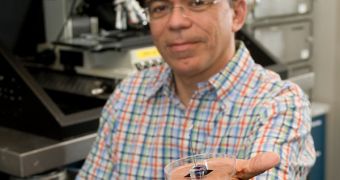A team of investigators from the Purdue University has developed an innovative component for drug-delivery patches, that now ensures a much wider palette of drugs can be administered via these devices.
The new type of pump holds great promise for allowing experts to use “microneedles” for delivering healing molecules, proteins or drugs to patients.
“We have developed a simple pump that's activated by touch from the heat of your finger and requires no battery,” explains Purdue professor of electrical and computer engineering, and biomedical engineering, Babak Ziaie.
He was the leader of the team that developed the innovation. The new work will be presented at the 14th International Conference on Miniaturized Systems for Chemistry and Life Sciences.
The event will take place in the Netherlands, at the University of Groningen, between October 3-7. The paper was authored by Ziaie and Purdue electrical and computer engineering PhD students Charilaos Mousoulis and Manuel Ochoa.
“There are only a handful of drugs that currently can be administered with patches. Most new drugs are large molecules that won't go through the skin,” Babak Ziaie reveals.
“And a lot of drugs, such as those for treating cancer and autoimmune disorders, you can't take orally because they aren't absorbed into the blood system through the digestive tract,” he adds.
But drug patches can make drug delivery easier by facilitating the penetration of the skin. Arrays of microneedles pass only through a very small section of skin, but get the job done just as efficiently as their larger counterparts.
“It's like a bandage – you would use it and discard,” Ziaie adds. The Purdue team believes that drug patches could soon become indispensable to the third world, as low-cost solutions to their medical woes.
Applying drugs through this method is also very convenient, Ziaie says, adding that it “takes 20 to 30 seconds” to administer the load.
“You need a relatively large force, a few pounds per square inch, to push medications through the microneedles and into the skin,” Ziaie says of the challenges the team had to face in developing the new pump.
“It's very difficult to find a miniature pump that can provide that much force.” he concludes.

 14 DAY TRIAL //
14 DAY TRIAL //